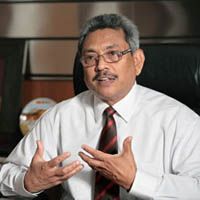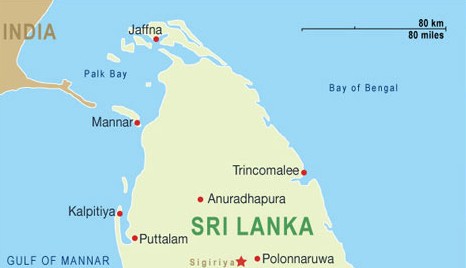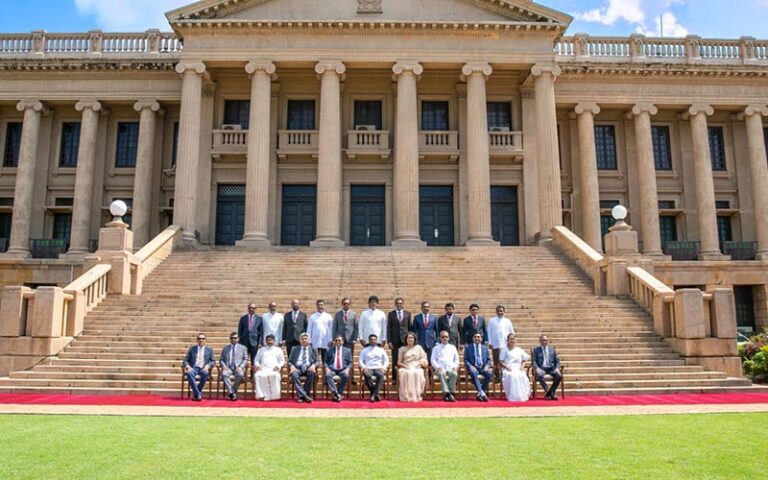 Military presence in the Jaffna peninsula as well as the Vanni was meant to guarantee the security of people living in the northern region, Defence Secretary Gotabhaya Rajapaksa said yesterday.
Military presence in the Jaffna peninsula as well as the Vanni was meant to guarantee the security of people living in the northern region, Defence Secretary Gotabhaya Rajapaksa said yesterday.
He told The Island that security forces’ presence was nothing but a necessity, though various interested parties and a section of the media were playing politics with purely a national security issue. The country had paid a very heavy price due to the failure of previous governments to adopt proper security measures. “I have no intention of repeating the same mistake,” he said.
The war veteran was responding to the allegation that an intimidating post-war military presence in the northern region, particularly in the Jaffna electoral district was inimical to the restoration of civilian rule. He alleged that critics had conveniently ignored the gradual decrease in military presence since the conclusion of the conflict on May 19, 2009.
Whatever the critics might say, those who had lived there during the conflict couldn’t be deceived by propagating lies, the Defence Secretary said. The reduction of military presence was visible, not only in the peninsula but in the Vanni as well, he said.
The Gajaba Regiment veteran stressed that post-war deployment of security forces was the prerogative of the armed forces in consultation with the Defence Ministry. Commenting on ongoing controversy over high security zones in the Jaffna peninsula, the Defence Secretary said that the presence of the Sri Lankan Army (SLA) deployment in the Jaffna peninsula had been gradually reduced since the end of the war.
Security Forces Commander Jaffna Major General Mahinda Hathurusinghe yesterday said that during the 2007/2008 period, the SLA presence in the Jaffna peninsula and the Jaffna islands amounted to 43,000 personnel. “By December 2009, the SLA strength was 26,400 officers and men. Today, the total SLA deployment comprised 13,200 personnel,” Major General Hathurusinghe said, noting the area covered by high security zones, too, had been reduced. The Jaffna Commander said: “In Palaly sector alone, we held 13,000 acres at the height of the conflict. Today, our deployment covers 6,200 acres.”
According to Maj. Gen. Hathurusinghe the military gave up an additional 21,000 acres held in other parts of the peninsula, including Colombuthurai, Chavakachcheri and Muhamalai.
Responding to a query, the Defence Secretary said that the military wouldn’t have been able to reduce its presence in the Jaffna peninsula without eradicating the enemy’s conventional fighting capability in the Vanni. Although, the peninsula had been regained in early 1996, the SLA continued to strengthen its presence fearing an all-out attack across the Jaffna frontline extending from Kilali to Nagarkovil via Muhamalai.
He said that the positioning of armed forces shouldn’t be a political issue or a topic for discussions with any external players. He said that the armed forces should be prepared to face any eventuality. Asked whether the government was concerned about a fresh bid to revive terrorism, the Defence Secretary said that security forces presence would act as a powerful deterrent. He accused some politicians of trying to use military presence in Jaffna as a rallying point against the government. He identified former Deputy Mayor of Colombo Azath Salley as one of those who had been engaged in an anti-government campaign. There could be powerful external elements trying to undermine peace and stability here through local pawns, he said, adding the government remained on alert to thwart fresh attempts to cause mayhem.
Those who had been severely critical of the government over Salley’s arrest were mum on the politician’s claim that Indian magazine Junior Vikatan misquoted him as having justified Tamil speaking Muslims taking up arms against the government, the Defence Secretary said.
Source: The Islands (Sri Lanka)




